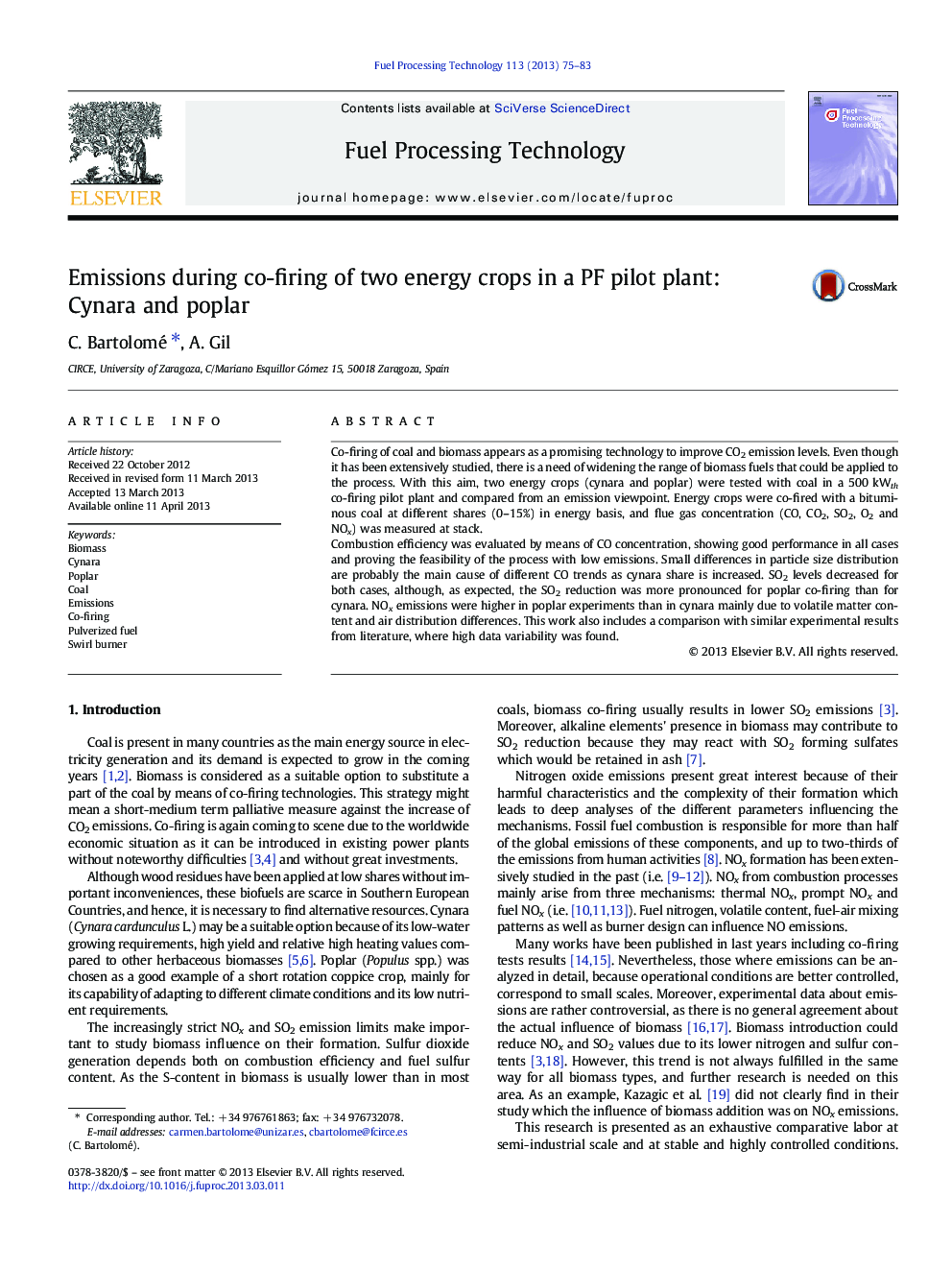| Article ID | Journal | Published Year | Pages | File Type |
|---|---|---|---|---|
| 210018 | Fuel Processing Technology | 2013 | 9 Pages |
•This paper is focused on the co-firing emissions study of a 500 kWth PF pilot plant.•Faced with the shortage of biomass in some countries, 2 energy crops are studied.•Lower CO emissions achieved with poplar than with cynara: Cl and particle size•SO2 reduction, more pronounced with poplar introduction than with cynara•VM content and operating conditions were the main responsible on NOx formation.
Co-firing of coal and biomass appears as a promising technology to improve CO2 emission levels. Even though it has been extensively studied, there is a need of widening the range of biomass fuels that could be applied to the process. With this aim, two energy crops (cynara and poplar) were tested with coal in a 500 kWth co-firing pilot plant and compared from an emission viewpoint. Energy crops were co-fired with a bituminous coal at different shares (0–15%) in energy basis, and flue gas concentration (CO, CO2, SO2, O2 and NOx) was measured at stack.Combustion efficiency was evaluated by means of CO concentration, showing good performance in all cases and proving the feasibility of the process with low emissions. Small differences in particle size distribution are probably the main cause of different CO trends as cynara share is increased. SO2 levels decreased for both cases, although, as expected, the SO2 reduction was more pronounced for poplar co-firing than for cynara. NOx emissions were higher in poplar experiments than in cynara mainly due to volatile matter content and air distribution differences. This work also includes a comparison with similar experimental results from literature, where high data variability was found.
